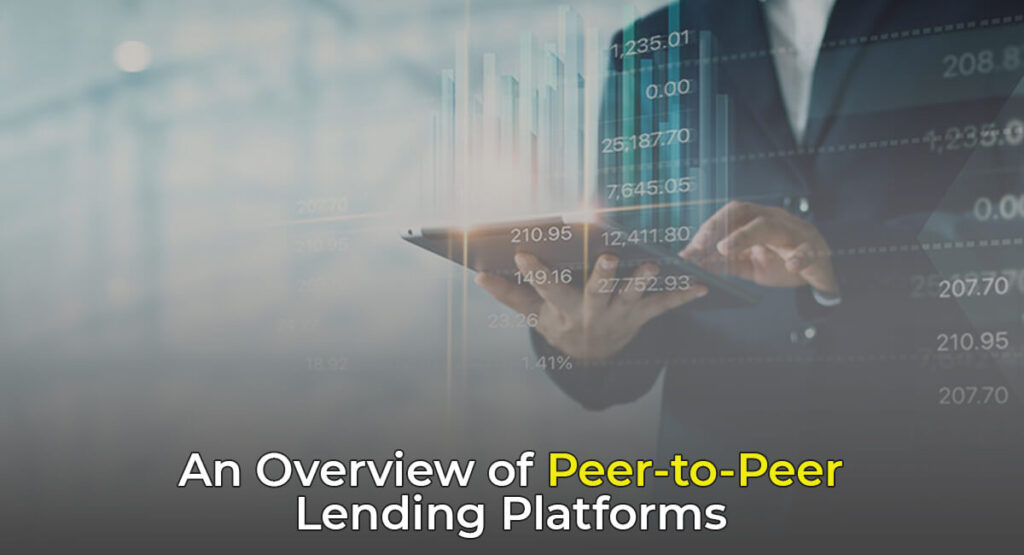What is peer to peer platform?
A P2P platform is an online marketplace that connects borrowers and lenders directly. Borrowers can apply for a loan by creating a listing on the platform, outlining the amount they need to borrow and the purpose of the loan. Lenders can then review the listings and choose which loans to invest in. P2P platforms typically use a credit scoring system to assess the creditworthiness of borrowers and set interest rates accordingly.
What is peer-to-peer lending, and how it works?
Peer-to-peer (P2P) lending allows individuals to borrow and lend money directly to each other without the involvement of traditional financial institutions such as banks. P2P lending typically occurs through online platforms, connecting borrowers and lenders and facilitating the loan process.
Borrowers typically create a listing on the P2P platform, outlining the amount they need to borrow and the purpose of the loan. Lenders can then review the listings and choose which loans to invest in. P2P platforms typically use a credit scoring system to assess the creditworthiness of borrowers and set interest rates accordingly.
P2P lending offers borrowers an alternative to traditional loans from banks and other financial institutions, particularly those who may not qualify for traditional loans. Additionally, it can allow investors to earn higher returns on their money than traditional investments.
However, it’s important to note that P2P lending is not without its risks, as the loans are not typically backed by collateral, which can lead to a higher default rate than traditional loans. Additionally, P2P platforms may not be subject to the same regulatory oversight as traditional financial institutions, which could lead to a lack of protection for borrowers and investors. Borrowers and investors must conduct their research and due diligence when considering P2P lending.
What should we consider while selecting peer-to-peer platforms?
When selecting a P2P lending platform, there are several things to consider
Reputation and track record: It’s important to select a platform with a good reputation and track record of loan performance. You can research the platform’s history and read reviews from other users to understand its reputation.
Platform’s fees
Look at the fees charged by the platform. Some platforms charge borrowers and lenders, while others only charge one or the other. Understanding the fee structure and factoring it into your investment decision is important.
Credit assessment process
Review the platform’s credit assessment process. A robust credit assessment process will help mitigate default risk.
Diversification
Look at the platform’s diversification options. A platform that offers different types of loans across various geographies and industries reduces the risk of default.
Auto-invest option
Some platforms offer an auto-invest feature that allows you to automate the loan selection process. It can help you diversify your portfolio and minimize your risk.
Regulation
Check if the platform is regulated by any authorities, whether it is a member of any industry bodies or holds any licenses. A regulated platform can provide some level of protection for borrowers and investors.
Ease of use
Make sure the platform is user-friendly and easy to navigate. It will make it easier for you to manage your investments.
Customer support
Consider the quality of customer support offered by the platform. Platforms that provide timely and helpful support can make the experience of investing in P2P loans much smoother.
Ultimately, conducting your own research and due diligence is important before investing in a P2P lending platform. Remember that different platforms have different practices and focus on different aspects of the P2P lending market, so choosing one that aligns with your investment goals and risk tolerance is important.
Conclusion
In conclusion, P2P lending platforms provide an alternative way for individuals to borrow and lend money, bypassing traditional banks and financial institutions. However, it’s important to evaluate the platform carefully before investing. When selecting a P2P platform, it’s important to consider factors such as reputation and track record, fees, credit assessment process, diversification, regulation, ease of use, customer support, etc.
Conducting your research and due diligence is important to understand the platform and make an informed decision. The fintech basics website is a good place to learn more about P2P lending platforms and what to consider when selecting one. It can give you a better understanding of the different platforms and the industry, which can help you make more informed investment decisions.
